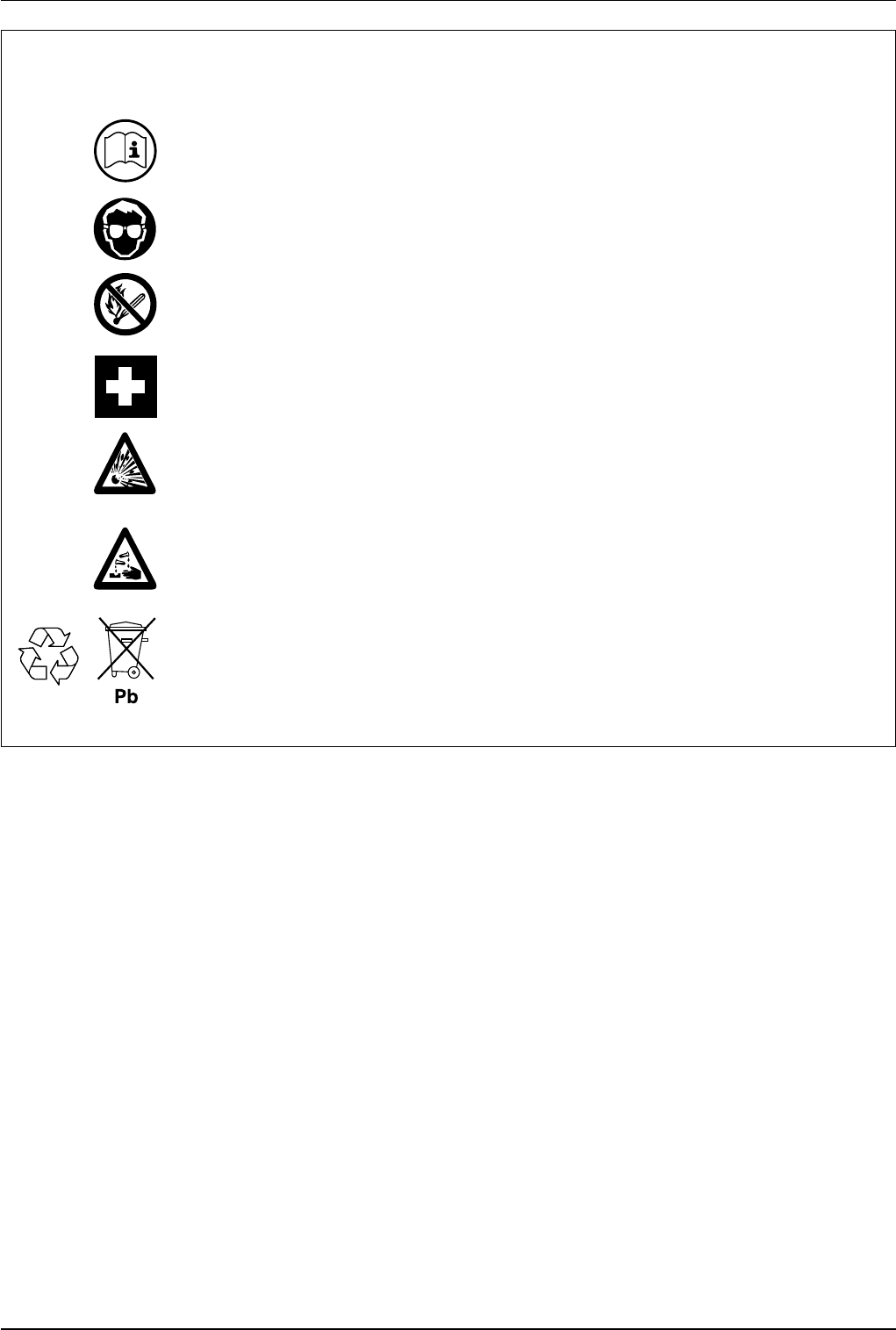
KMR 1250 B User Instructions English
45
Safety information
which must be observed when handling batteries.
Comply with the user instructions and ensure that these are displayed at the
charging station. Before the operator carries out any work on batteries, he/she
must have received proper instruction from a suitably qualified person.
Wear safety goggles and protective clothing when working on batteries. Ob-
serve accident prevention regulations, as well as DIN VDE 0510, VDE 0105
Part 1.
Smoking is forbidden!
Make sure that there are no naked flames, other source of heat or sparks in
the proximity of the battery, otherwise there is a danger of explosion or fire.
If electrolyte comes into contact with skin or eyes, rinse the affected area with
plenty of clean water. The metal parts of battery cells are permanently live.
Therefore do not place any tools or other objects on top of the battery.
Explosion and fire hazard! Avoid short-circuits.
Warning! The metal parts of battery cells are permanently live. Therefore do
not place any tools or other objects on top of the battery.
Electrolyte is highly corrosive. Under normal operating conditions it is not
possible for anything to come into contact with the electrolyte. If the battery
housing is destroyed, the bound electrolyte that leaks out is just as corrosive
as liquid electrolyte.
Return to manufacturer!
Exhausted batteries bearing this symbol are a re-usable resource which
should be recycled accordingly. Exhausted batteries that are not intended to
be recycled must be disposed of as hazardous waste in compliance with all
relevant regulations.
Note:
We recommend using the automatic battery charger (part
no. 6.654-116) for starter batteries. Use only battery
chargers with test certification mark.
Only undertake the charging procedure in dry, weather-
protected areas.
n Bring machine to a halt, pull out ignition key
n Tip seat forwards and open unit cover
n Connect positive post (+) to battery charger (red pole
clamp)
n Connect negative post (–) to battery charger (black pole
clamp)
n Connect battery charger to mains power supply and
switch on if applicable. Charging period as specified by
the battery charger manufacturer.
Charging the battery
Checking the level of
electrolyte in the battery
Note: concerns only batteries which are not totally
maintenance-free.
Check the level of electrolyte in batteries filled with acid.
Make sure the battery is fully charged before you carry out
the check. If required:
n Top up each cell with distilled water until the lead plates
are covered by approx. 1 cm of liquid.


















